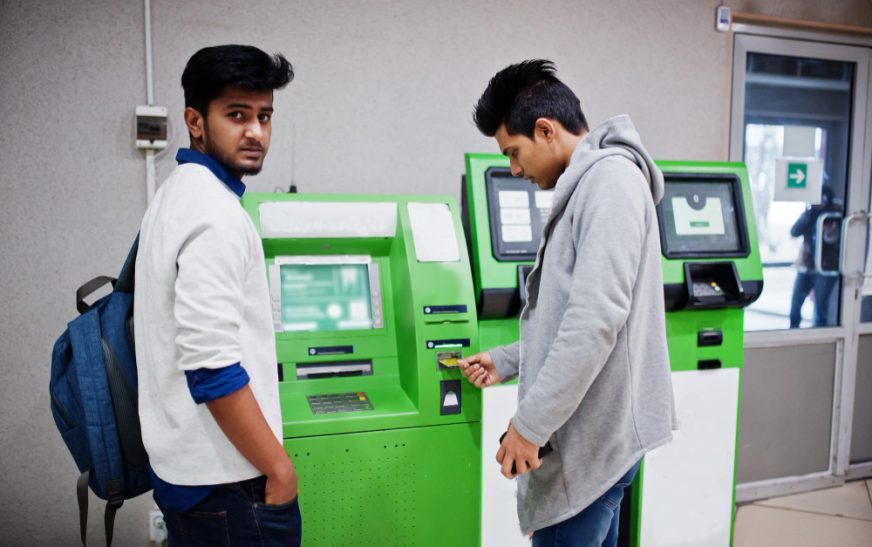In recent years, the financial technology (fintech) industry has experienced exponential growth, revolutionizing the way we manage our finances and interact with banking services. From mobile banking apps to peer-to-peer lending platforms, fintech innovations are reshaping traditional banking practices and offering consumers more convenient, efficient, and accessible financial solutions. In this comprehensive guide, we’ll explore the rise of fintech, the key technologies driving its evolution, and how it’s transforming traditional banking services.
Market Growth Overview:
According to the leading research firm Fortune Business Insights, the global fintech market was valued at USD 294.74 billion in 2023 and is projected to be worth USD 340.10 billion in 2024 and reach USD 1,152.06 billion by 2032, exhibiting a CAGR of 16.5% during the forecast period (2024-2032). North America dominated the global market with a share of 34.05% in 2023.
Understanding Fintech
Fintech refers to the use of technology to deliver financial services in innovative ways, often leveraging data analytics, artificial intelligence (AI), blockchain, and other cutting-edge technologies to streamline processes and improve customer experiences. Fintech companies range from startups and disruptors to established financial institutions incorporating digital solutions into their offerings.
Key Technologies Driving Fintech Innovation
Several technologies are driving fintech innovation and shaping the future of banking services:
- Mobile Technology: The widespread adoption of smartphones has paved the way for mobile banking apps, allowing consumers to manage their finances, make payments, and access banking services anytime, anywhere.
- Artificial Intelligence (AI): AI-powered chatbots and virtual assistants are enhancing customer service in banking, providing personalized recommendations, automating processes, and improving fraud detection and risk management.
- Blockchain: Blockchain technology underpins cryptocurrencies like Bitcoin and Ethereum, offering secure, transparent, and decentralized solutions for payments, remittances, smart contracts, and asset tokenization. These innovations streamline various financial processes, making global transactions more accessible and secure. For businesses seeking to integrate cryptocurrency acceptance seamlessly, a dedicated blockchain payment getaway can simplify complex digital currency operations.
- Big Data Analytics: Advanced analytics and machine learning algorithms enable financial institutions to analyze vast amounts of data to gain insights into customer behavior, assess creditworthiness, detect fraud, and optimize decision-making processes.
- Robotic Process Automation (RPA): RPA automates repetitive tasks and workflows, reducing errors, cutting costs, and enhancing operational efficiency in areas such as account management, loan processing, and compliance.
- Biometrics: Biometric authentication methods such as fingerprint scanning, facial recognition, and voice recognition are enhancing security and improving user experience in digital banking applications.
Transforming Traditional Banking Services
Fintech is disrupting traditional banking services across various domains, including:
- Payments: Fintech solutions like mobile wallets, peer-to-peer payment apps, and digital currencies are revolutionizing the way we transact, offering faster, cheaper, and more secure payment options compared to traditional methods.
- Lending: Peer-to-peer lending platforms and online marketplace lenders are providing alternative sources of financing for individuals and small businesses, offering faster loan approval processes, lower interest rates, and greater accessibility to credit.
- Wealth Management: Robo-advisors and digital investment platforms are democratizing wealth management, providing automated portfolio management, personalized investment advice, and lower fees compared to traditional financial advisors.
- Insurance: Insurtech startups are leveraging technology to disrupt the insurance industry, offering innovative products, streamlined claims processing, and personalized insurance solutions tailored to individual needs and risk profiles.
- Remittances: Fintech companies are transforming the remittance market by offering cheaper, faster, and more transparent cross-border payment solutions, reducing the cost and friction associated with international money transfers.
Benefits of Fintech for Consumers
The rise of fintech offers several benefits for consumers, including:
- Convenience: Fintech solutions provide anytime, anywhere access to banking services, allowing consumers to manage their finances on-the-go through mobile apps and online platforms.
- Cost Savings: Fintech companies often offer lower fees, competitive interest rates, and reduced transaction costs compared to traditional banks, saving consumers money on banking services and financial products.
- Accessibility: Fintech innovations are expanding access to financial services for underserved populations, including the unbanked and underbanked, by leveraging digital technologies and alternative data sources for credit scoring.
- Personalization: Fintech platforms leverage data analytics and AI to offer personalized recommendations, tailored products, and targeted financial advice based on individual preferences, goals, and financial behavior.
Challenges and Considerations
Despite its transformative potential, fintech faces several challenges and considerations, including:
- Regulatory Compliance: Fintech companies must navigate complex regulatory environments and compliance requirements, which vary across jurisdictions and may pose barriers to innovation and expansion.
- Cybersecurity Risks: With the increasing digitization of financial services, cybersecurity threats such as data breaches, phishing attacks, and ransomware pose significant risks to consumers’ personal and financial information.
- Privacy Concerns: The collection and use of consumer data by fintech companies raise privacy concerns regarding data protection, consent, transparency, and ethical use of personal information.
- Financial Inclusion: While fintech has the potential to promote financial inclusion, there are challenges in reaching underserved populations, addressing digital literacy gaps, and ensuring equitable access to affordable and inclusive financial services.
Future Outlook
As fintech continues to evolve, we can expect to see further innovations and disruptions in the banking and financial services industry. Trends such as open banking, decentralized finance (DeFi), central bank digital currencies (CBDCs), and embedded finance are likely to shape the future landscape of fintech, offering new opportunities for collaboration, competition, and transformation.
FAQs
1.What is fintech?
Fintech, short for financial technology, refers to the use of technology to deliver financial services in innovative ways. It encompasses a wide range of products, services, and technologies that are disrupting and transforming the traditional financial industry.
- What are some examples of fintech products and services?
Fintech products and services include mobile banking apps, peer-to-peer payment platforms, robo-advisors, crowdfunding platforms, digital wallets, blockchain-based cryptocurrencies, online lending platforms, and insurance technology (insurtech) solutions, among others.
- How is fintech different from traditional banking?
Fintech differs from traditional banking in its use of technology to streamline processes, reduce costs, and enhance customer experiences. Fintech companies often operate with lower overhead costs, offer more personalized services, and leverage data analytics and automation to provide faster, more efficient financial solutions.
- What are the benefits of fintech for consumers?
Fintech offers several benefits for consumers, including increased convenience, lower fees, faster transactions, greater accessibility to financial services, personalized recommendations, improved transparency, and enhanced security compared to traditional banking methods.
- Is fintech regulated?
Yes, fintech companies are subject to regulation and oversight by financial regulators in the jurisdictions where they operate. Regulations may vary depending on the type of financial services offered, the geographic location, and the specific activities of the fintech company.
- What are some of the challenges facing fintech companies?
Fintech companies face various challenges, including regulatory compliance, cybersecurity risks, data privacy concerns, access to capital, competition from traditional financial institutions, scalability issues, and the need to build consumer trust and confidence in new technologies.
7.How is fintech impacting traditional financial institutions?
Fintech is forcing traditional financial institutions to adapt and innovate in response to changing consumer preferences and technological advancements. Many banks and financial institutions are partnering with or acquiring fintech startups, investing in digital transformation initiatives, and enhancing their own digital offerings to remain competitive in the evolving landscape.
8.What are some emerging trends in fintech?
Some emerging trends in fintech include open banking, decentralized finance (DeFi), central bank digital currencies (CBDCs), embedded finance, artificial intelligence (AI) and machine learning, blockchain technology, regtech (regulatory technology), and sustainable finance solutions.
- How can consumers stay informed about fintech developments and trends?
Consumers can stay informed about fintech developments and trends by following reputable fintech news sources, blogs, and industry publications, attending fintech conferences and events, engaging with fintech communities on social media, and researching and exploring new fintech products and services.
- What does the future hold for fintech?
The future of fintech is likely to be characterized by continued innovation, disruption, and collaboration between fintech startups, traditional financial institutions, technology companies, and regulators. As technology advances and consumer expectations evolve, fintech will play an increasingly central role in shaping the future of finance and banking worldwide.
Conclusion
The rise of fintech is transforming traditional banking services, offering consumers more convenient, efficient, and accessible financial solutions than ever before. By leveraging cutting-edge technologies such as mobile, AI, blockchain, and big data analytics, fintech companies are reshaping the way we manage our finances, make payments, access credit, and invest for the future. While fintech presents numerous benefits for consumers, it also poses challenges and considerations related to regulation, cybersecurity, privacy, and financial inclusion. As the fintech ecosystem continues to evolve, stakeholders must work collaboratively to harness its potential for positive impact and ensure a fair, inclusive, and sustainable financial future for all.


















